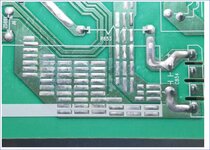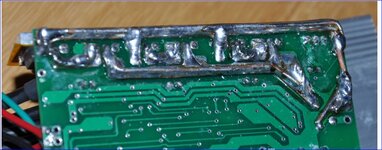userx2
Full Member level 3
Maybe this is another stupid question but here it goes:
A lot of PCB tracks in power supplies have a strip of exposed solder running on top of them.
I once thought this is to increase the current capacity of a track but when I looked into that, it appears that solder does not really do much for the current capacity.
Or is it done for allowing test fixtures to make contact during production testing?
I really do not know.

So what is the real reason?
Regards
X
A lot of PCB tracks in power supplies have a strip of exposed solder running on top of them.
I once thought this is to increase the current capacity of a track but when I looked into that, it appears that solder does not really do much for the current capacity.
Or is it done for allowing test fixtures to make contact during production testing?
I really do not know.
So what is the real reason?
Regards
X

